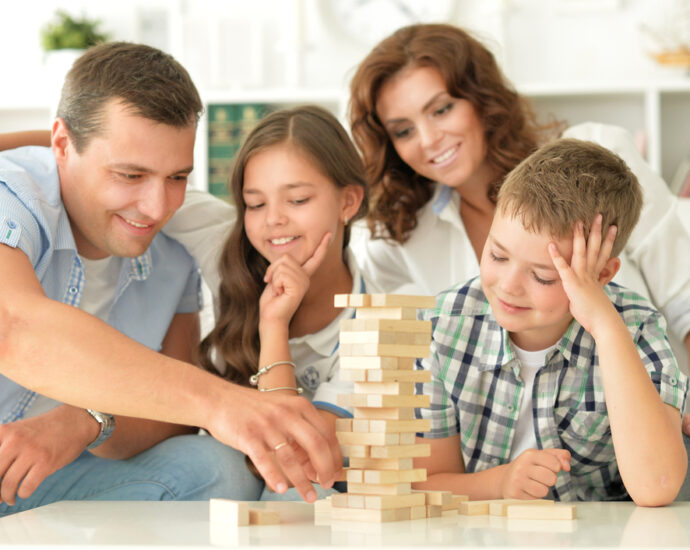In the first few years of life, a child’s brain forms more than 1 million new neural connections every second. During this critical time, play is not just about fun—it’s one of the most powerful ways children learn and grow. For the health-conscious parent, selecting toys and activities that support brain development can make a lasting impact on a child’s cognitive, emotional, and even physical well-being.
In this guide, we’ll explore the best brain-boosting toys and activities that promote learning, problem-solving, creativity, and social-emotional growth—helping you nurture a sharper, more resilient young mind.
Page Contents
Understanding the Science: How Play Builds the Brain
Play is not merely a way to pass time—it’s how children build the foundations of intelligence. According to pediatric neuroscience, activities that stimulate the brain through imagination, movement, social interaction, and sensory exploration lead to stronger neural connections and better long-term learning outcomes.
Key brain functions supported by play include:
- Executive function (planning, decision-making, self-regulation)
- Language and communication skills
- Fine and gross motor development
- Emotional intelligence
- Memory and recall
- Spatial and mathematical reasoning
Best Types of Toys for Brain Development
Let’s break down some of the most effective types of toys that help stimulate a child’s brain growth.
Building Toys (e.g., LEGO®, Magna-Tiles®, wooden blocks)
These toys enhance:
- Spatial reasoning
- Creativity and design thinking
- Problem-solving
- Hand-eye coordination
Building activities also introduce basic concepts of physics, symmetry, and architecture, especially when kids construct stable structures or experiment with balance and weight.
STEM and Coding Toys (e.g., Osmo, Snap Circuits, Botley)
STEM toys foster:
- Logic and sequencing
- Computational thinking
- Cause-and-effect learning
- Experimentation
Coding robots and circuit kits are particularly good at encouraging children to test hypotheses and debug errors, mirroring scientific and engineering processes.
Board Games and Card Games (e.g., Memory, Guess Who, Rush Hour, Uno)
These games sharpen:
- Working memory
- Attention span
- Strategy and forward planning
- Emotional regulation (especially when learning to win or lose gracefully)
Games that require taking turns and following rules also support social-emotional learning and impulse control.
Arts and Crafts (e.g., painting sets, play dough, origami, sticker books)
Art builds:
- Fine motor skills
- Creative expression
- Focus and concentration
- Pattern recognition
Engaging in hands-on creation enhances bilateral coordination (using both hands) and nurtures emotional resilience by giving children a safe way to express thoughts and feelings.
Imaginative Play Toys (e.g., puppets, costumes, dollhouses, play kitchens)
Pretend play develops:
- Verbal communication
- Empathy and perspective-taking
- Narrative thinking
- Executive functioning
Role-playing helps kids simulate real-life situations and practice social scripts, making them more emotionally adaptable and verbally expressive.
Brain-Building Activities That Don’t Require Toys
You don’t always need a toy to spark mental growth. Many everyday activities are brain-building opportunities in disguise.
Storytime and Reading Aloud
Books are powerful tools for building vocabulary, comprehension, and emotional literacy. Ask your child to predict what happens next or explain why a character feels a certain way—this deepens critical thinking and empathy.
Nature Walks and Outdoor Exploration
Time in nature activates all five senses and improves attention span, curiosity, and sensory integration. Encourage your child to collect leaves, observe insects, or navigate trails—all of which stimulate spatial and scientific learning.
Music and Movement
Dancing to rhythms or learning simple instruments (like a tambourine or xylophone) promotes:
- Auditory processing
- Pattern recognition
- Fine and gross motor coordination
- Emotional regulation
Music has been shown to enhance brain plasticity and even improve math skills.
Puzzles and Problem Solving Challenges
Puzzles teach persistence, shape recognition, and logical deduction. Whether it’s a classic jigsaw or a hands-on puzzle toy like a shape sorter, these activities help kids break down big problems into smaller, solvable steps.
Tips for Parents: Making Playtime Smarter
Here’s how to maximize the brain-boosting potential of toys and play:
- Choose open-ended toys that can be used in multiple ways. They encourage imagination and problem-solving over passive consumption.
- Rotate toys regularly to maintain interest and novelty, which keeps the brain actively engaged.
- Play with your child when possible. Social interaction amplifies the learning value of any activity.
- Ask open-ended questions during play: “What do you think will happen?” or “Why did you build it that way?” This promotes metacognition—thinking about thinking.
- Limit screen time, especially in younger children, and opt for interactive or creative screen-based experiences if used at all
The Long-Term Payoff of Brain-Boosting Play
Children who engage in mentally stimulating play:
- Perform better academically
- Show stronger emotional resilience
- Have higher self-esteem and confidence
- Develop a more curious, growth-oriented mindset
These outcomes don’t come from flashcards or rote memorization—they’re cultivated through joyful, challenging, and imaginative experiences. Investing in the right toys and activities now lays a lifelong foundation for learning and adaptability.
Conclusion: Smart Play, Strong Minds
For health-conscious families, nurturing brain development doesn’t require high-tech gadgets or rigid learning plans. It starts with simple, intentional play. The right toys and activities can fuel your child’s natural love of learning and shape a mind that is curious, resilient, and ready for the world.
So go ahead—build that LEGO castle, paint that unicorn, or race to finish that puzzle. Your child’s brain is growing with every joyful moment.
READ MORE: The Crucial Role of Play in Child Development: Why Play Matters
Sources:
https://pmc.ncbi.nlm.nih.gov/articles/PMC7075358/
https://www.health.harvard.edu/blog/3-kinds-toys-really-help-child-2016121310853
https://developingchild.harvard.edu/key-concept/brain-architecture/
